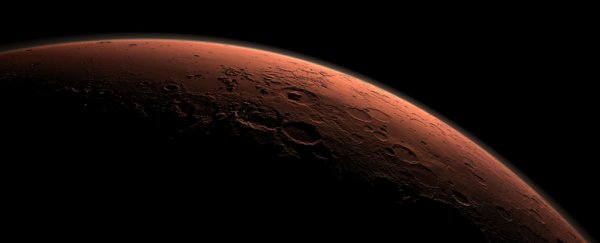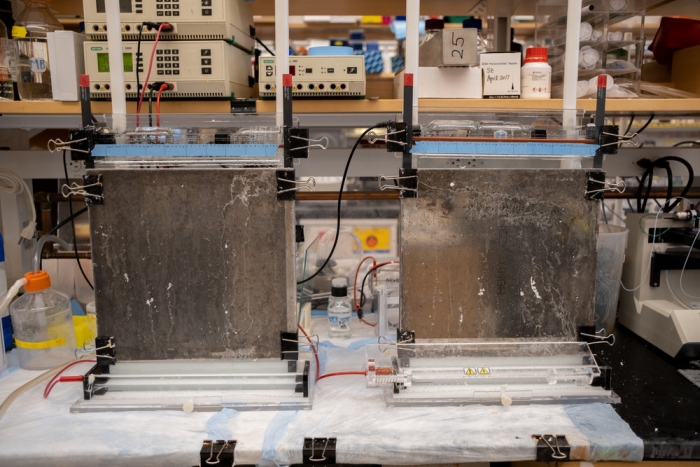The prospects of ancient life forming on Mars just got a little more likely. Scientists have determined that in the planet's distant past, conditions could have been just right for the formation of RNA molecules.
If that was the case, life could have formed on Mars consistent with the RNA World hypothesis - the idea that RNA predates the DNA in which our genetic information is predominantly stored today, a step in the complex evolutionary process.
The research has been uploaded to the pre-print server bioRxiv and is yet to be peer-reviewed, but it's an exciting step forward in our understanding of potential - or past - life on the Red Planet.
When it comes to finding concrete traces of life on Mars, our capabilities are limited by distance, which in turn limits the technology we can use to explore and understand Mars. But one of the things we can do is try to piece together the Red Planet's geochemical history to try to determine if Mars was at least hospitable, and if we are barking up the right tree in continuing to search.
The RNA World is a widely accepted hypothetical scenario for the evolution of life here on Earth. It proposes that the single-stranded RNA (ribonucleic acid) developed before double-stranded DNA (deoxyribonucleic acid).
RNA is self-replicating, capable of catalysing cellular chemical reactions, and capable of storing genetic information. But it's somewhat more fragile than DNA - so, when DNA came along, according to the hypothesis, RNA was superseded.
But for RNA to form in the first place, it requires certain geochemical conditions. To determine whether these molecules could have formed on Mars, a team of researchers led by planetary scientist Angel Mojarro of MIT modelled the geochemical conditions of Mars 4 billion years ago, based on our understanding of its geochemistry today.
"In this study we synthesise in situ and orbital observations of Mars and modelling of its early atmosphere into solutions containing a range of pHs and concentrations of prebiotically relevant metals, spanning various candidate aqueous environments," the researchers wrote in their paper.
"We then experimentally determine RNA degradation kinetics due to metal-catalysed hydrolysis and evaluate whether early Mars could have been permissive towards the accumulation of long-lived RNA polymers."
Mars doesn't have liquid water on its surface now, but geological evidence obtained by various missions suggests that it did once, a long time ago.
So, Mojarro and his team created solutions of several metals thought to be important to the emergence of life in proportions seen in Martian dirt - iron, magnesium and manganese - and various acidities also seen on Mars. These replicated a number of Martian environments that we believe were once quite soggy.
Then the team soaked genetic molecules in the various solutions, to see how long the RNA took to degrade.
They found that the RNA was most stable in slightly acidic waters - a pH of around 5.4 - with a high concentration of magnesium ions. Environments that would support these conditions would be Martian volcanic basalts - which would be restricted.
Global Martian conditions would be likely more neutral, and there were even some solutions at pH 3.2 in which the RNA degraded more quickly.
Of course, these results don't conclusively prove that RNA developed on Mars, especially since the geochemistry is a guess (a very educated guess, but still a guess). However, the results do show that these conditions could have existed on Mars, so we cannot rule out the RNA World hypothesis as a Martian evolutionary path.
"Future work is required to further constrain the composition of theoretical Mars waters with respect to mechanisms that may have accumulated metals to prebiotically relevant concentrations," the researchers wrote in their paper.
"The work presented here highlights the importance of metals and pH derived from variable bedrock compositions and hypothetical atmospheric conditions on RNA stability … [and] advances our understanding of how geochemical environments could have influenced the stability of a potential RNA World on Mars."
The team's paper is available on the pre-print server bioRxiv.

